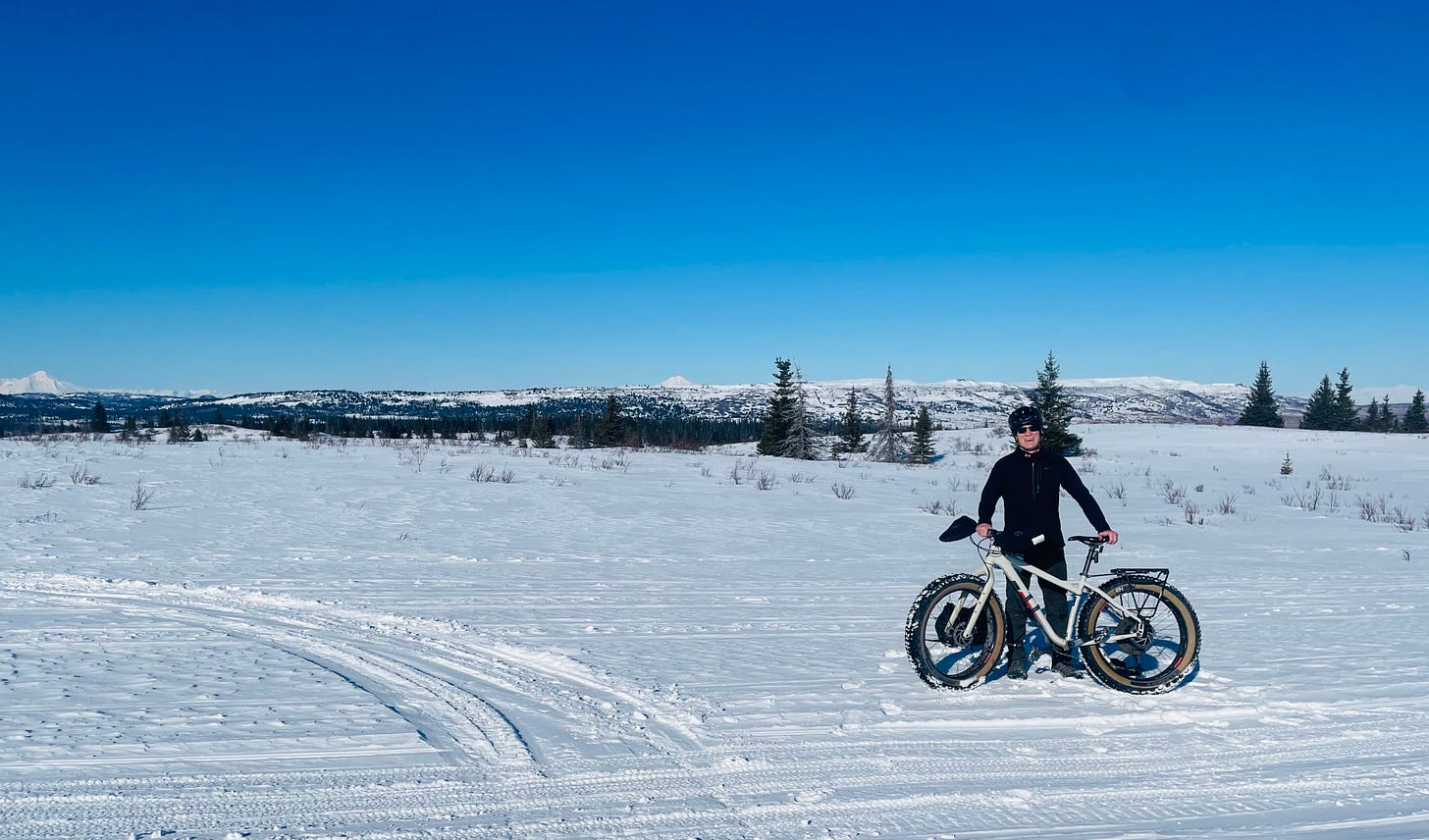An Epic Day for This Old Guy
By Hal Shepherd
Flying over the Sheenjek River country of Western Alaska, where she and husband Olaus spent many of their summer months in years past, Mardy Murie writes:
…I watched the glaciers, the mountain peaks, the rivers, unroll beneath the plane, and thought about the whole fantastic experience…. I think about that return to the part of Alaska which has meant so much in my life, the overpowering and magnificent fact is that Lobo Lake is still there, untouched. Last Lake is still there, untouched.… the tundra, the mountains, the unmarked space, the quiet, the land itself, are all still there."[1]
For many Alaskans, there are still places that offer that mystical romance of vast wild places. For me, one of them is the Caribou Hills/Tustumena country outside of Homer which covers a roadless swath of the lower Kenai Peninsula and whose rivers and streams ultimately flow into the Anchor River and Fox River watersheds. Like Murie, I often fly over the hundreds of lakes, wetlands, forested hills, and rugged Kenia Mountain range that comprise this landscape. Feeling the pull of this relatively untouched wilderness between Homer and Anchorage, I have always wanted to explore it on the ground. I was, therefore, delighted last year when I learned about the Homer Epic. The Epic, sponsored by the Homer Cycling Club and the Friends of Kachemak Bay State Park, is described as "a 50 km or 100 km human-powered winter race in the Caribou Hills on some of the most scenic, marked winter trails you will find. Ski, bike, or run…"
Earlier this month, for the second year in a row, I did the 50km bike ride, which starts and ends at 1,300 feet above sea level at McNeil Canyon Elementary School. The trailhead is just a 15-minute bike ride from my house up the McNeil incline, providing a terrific opportunity to train on the actual course by simply stepping out my back door and getting on the bike. From the School, the route parallels a portion of the McNeil Ski Trail and then turns onto the power line easement before veering off through the forests and open meadows of the Caribou Hills. At Caribou Lake, the route circles back, crossing another meadow before jumping back on the easement, which makes a straight line back through the trees and open meadows, including terrific views of the Kenai Mountain Range to the South all the way back to the start. This is also the section of the route that makes most of the 2,541 ft elevation gain, including the infamous Mattews Hill, which goes straight up for about 800 feet, requiring a humiliating walk while pushing the bike for about half of it.
Part of the reason for the allure of ultra sports for fitness nuts like yours truly is the rugged individualism, the grim and grueling struggle of man against nature, and being able to brag about it. According to Jessica Cherry and Frank Soos, "Long before the dawn of reality TV shows about gold mining or crab fishing, something about Alaska encouraged people to do something extreme for the sake of telling a good story."[2]
Because I’m going to be 64 next month, this year I gloated about finishing the bicycling portion of the EPIC in the top 10. That is until my wife burst my bubble by getting me a book on the history of bicycling in Alaska. In Wheels on Ice – Stories of Cycling in Alaska, I learned about the 350-mile Iditasport Extreme, which also includes skiers and runners traveling along part of the Iditarod Trail. And then there’s the Iditabike, which runs the entire length of the 1,000-mile trail. Both are annual events making my mere 50K (even as an old fart) seem a little less Epic.
Alaska’s love affair with bicycling events has its roots in the advent of the "modern" bicycle (a major improvement over the previous model with its massive front wheel in the front and no pedals, chain, or, for that matter, breaks). While this advancement created a biking boom around the world, Alaska had the additional motivation from another boom which was underway – the gold rush. During the mass migration to the gold fields, bicycles just made sense in a land with no paved roads, harsh weather, long distances, and of course, lots of snow and ice.
After the Klondike fever died down, bikes with fatter tires caught on, allowing people to take advantage of snowy trails. The SnowCat rim, designed by Alaskan Cycle innovator Simon Rako, entailed a wide rim that accommodates a wider tire at low pressure. This allowed bikes to ride on top of the snow rather than sinking. Creating frames that would accommodate this rim-tire combination led to fat bikes specifically designed to be ridden on a soft surface.
In a time when the scenic beauty and unique natural environment of Alaska are under unprecedented threat, it is important to note that because of the grand scale of Alaska's wild places, there is still much wonder left and many places to explore. May we always have the opportunity to experience the Alaskan wilderness up close and on its own terms.
…Maybe I’ll ride the 100k trail next year
[1] Two for the Far North, p. 385 (Alaska Northwest Books, 1995).
[2] Wheels on Ice, Stories of Cycling in Alaska, p. 35 (University of Nebraska Press 2022).



What a great adventure, Hal! I loved learning more about this beautiful part of Alaska too. Your deep appreciation for nature comes through!